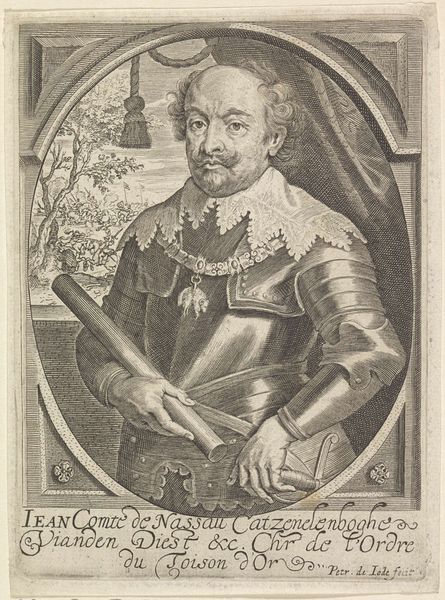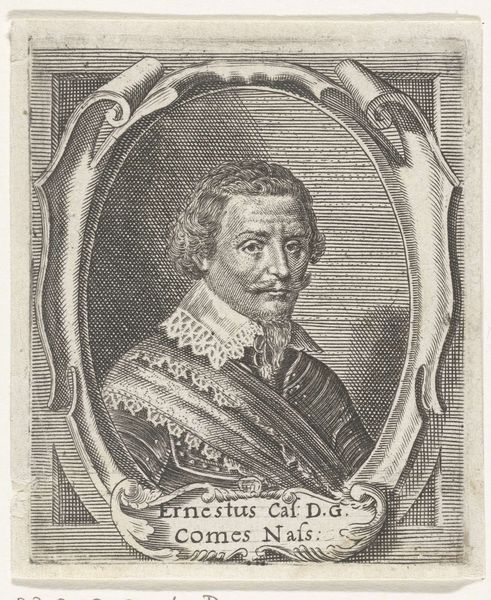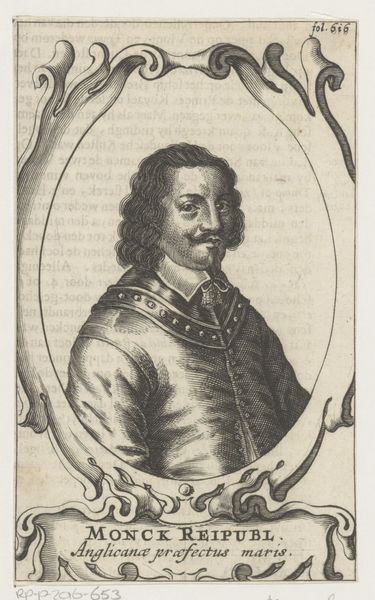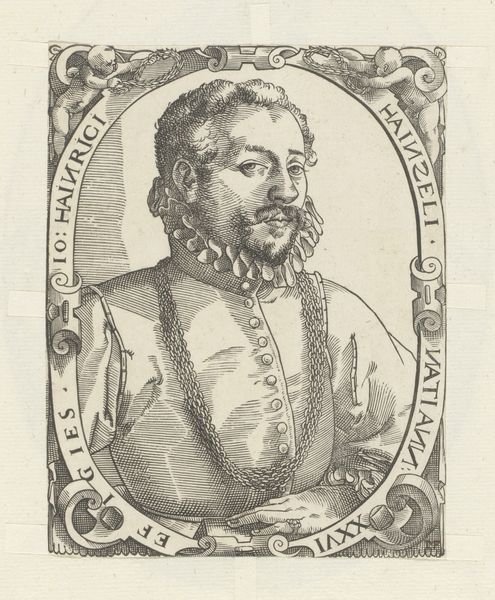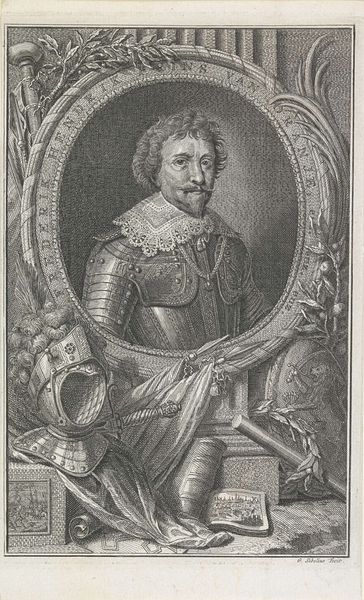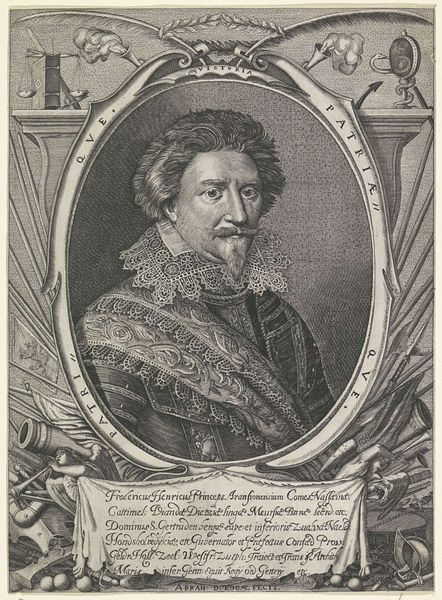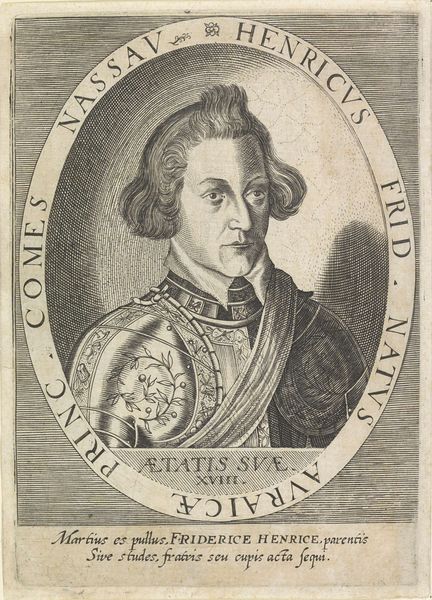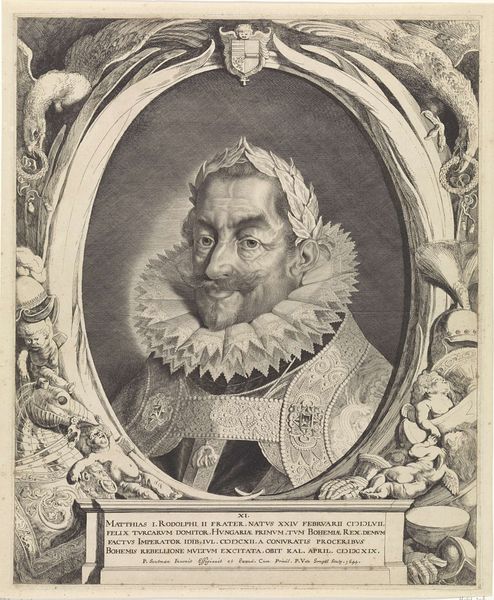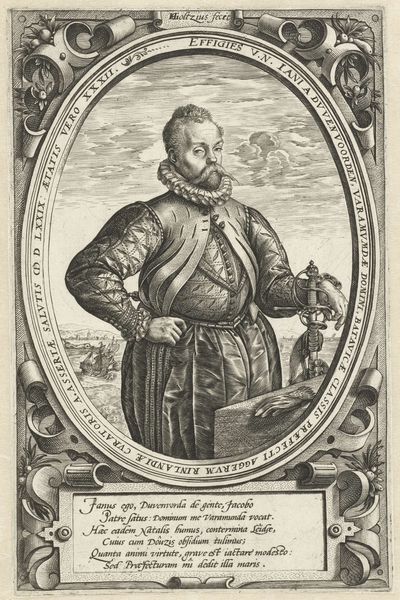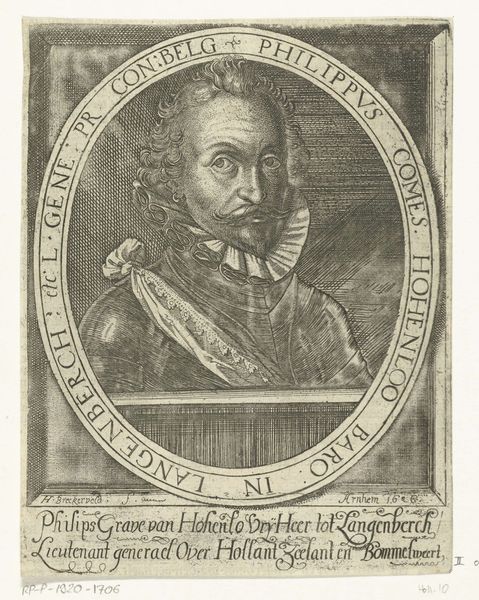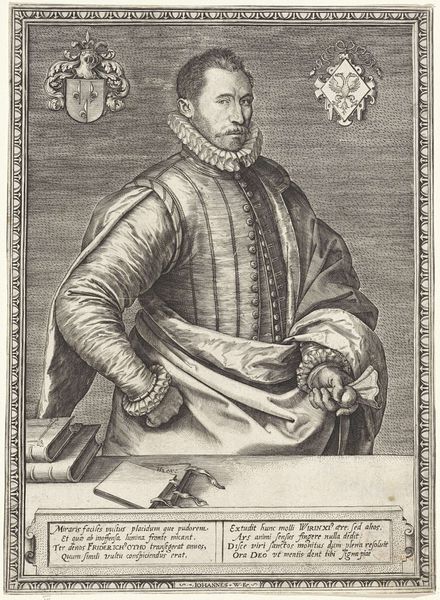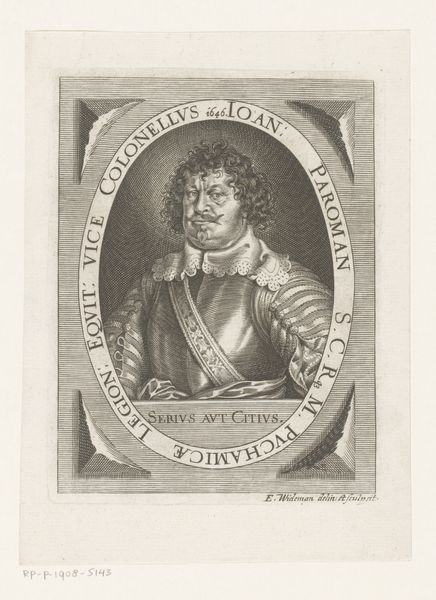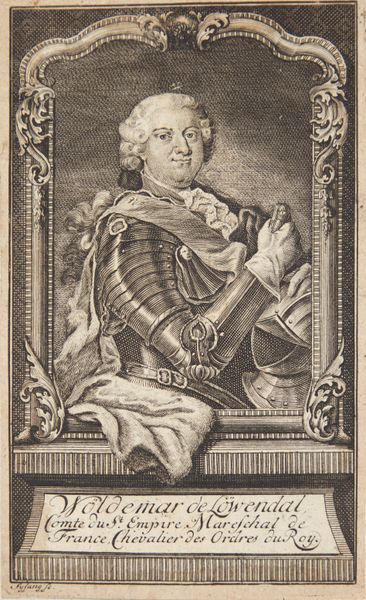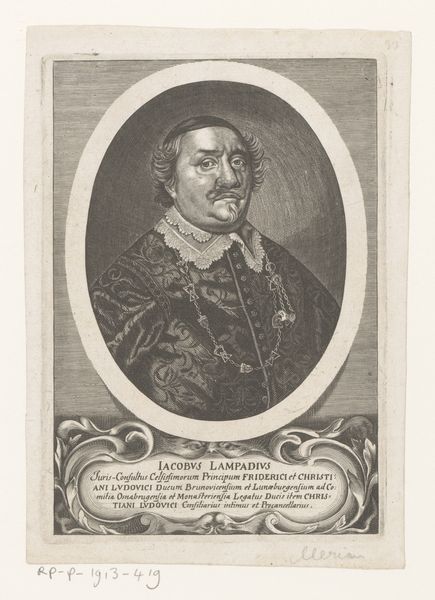
print, engraving
#
portrait
#
self-portrait
#
baroque
# print
#
line
#
engraving
Dimensions: sheet (cut within platemark): 24.2 x 17.8 cm (9 1/2 x 7 in.)
Copyright: National Gallery of Art: CC0 1.0
Editor: We are looking at a self-portrait made around 1630 by Mathurin Robelot, realized as a detailed engraving. The ornate border around the central figure has a slightly grotesque, theatrical air. What can you tell us about its context? Curator: Theatrical is an excellent descriptor! Robelot, by presenting himself so meticulously within such a stylized frame, is consciously constructing an image of the artist as a figure of importance. This was a period of emerging artistic identities and increasingly powerful art academies. Think about who this print might have been intended for; what social circles did such imagery circulate within? Editor: Presumably other artists and patrons of the arts? It does have an almost promotional feel to it, doesn't it? Curator: Precisely! Consider the very act of creating a self-portrait print – it allows for widespread dissemination and replication. Robelot is essentially advertising his skills and cultivating his artistic persona. Also note the prominent display of his tools – the burin, the plate, and even that curiously ornate table beneath the portrait, which reinforces his mastery. Editor: So, it's less about personal reflection and more about establishing his place in the art world of the time. Curator: It’s about negotiating his position within an emerging artistic and social hierarchy. His self-representation as a craftsman, an intellectual, and someone who controls their image for posterity is really interesting in light of increasing professionalization in art making. What do you think about how Baroque art institutions might react to this promotional piece? Editor: I guess this piece invites us to consider art as a profession. He takes ownership and authorship through that engraved declaration at the bottom. This also really helps one look at a baroque style in an almost sociological and economic way. Curator: Exactly! Robelot's self-portrait, when examined through this historical and social lens, reveals so much about the evolving role of the artist and the marketplace of images.
Comments
No comments
Be the first to comment and join the conversation on the ultimate creative platform.
